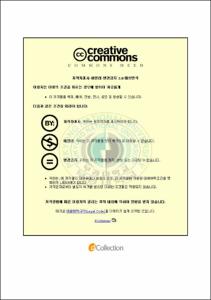일본어 복합동사의 어 구조 연구
- Alternative Title
- A Study on Japanese Complex Verb Constructions
- Abstract
- This study analyzes Japanese complex verb constructions, dividing them into 6 types according to the meaning relation betweenthe former element(V1) and latter element(V2): the [method-result] constructions, the [cause-effect] constructions, the aspect constructions, the collateral circumstance constructions, the parallel constructions and the complement constructions. Specifically, this analysis shows how the lexical meaning of the main verb performs its semantic role in the complex verb and how it is involved in the contextual situation.
The [method-result] constructions focuses on thechange of the subject in a transitive sentence, while the [cause-effect] constructions focuses on the consequent state of the subject in an intransitive sentence. A typical aspect constructions focuses on the action of the intransitive verb and the two verbs are combined in [modifying- modified] relation. A collateral circumstance constructions associated with the external element of instantaneous time, when showing movement, is clearly differentiated from the aspect constructions. Though there seems not to be a regularpattern in its internal constructions, the parallel constructions shows diverse changing aspects since it includes no other restrictions than the condition that the constituents must contain their original meanings in a before-after time relation. The complement constructions, in particular, is related with a verb’s aspect, not irrelevantto the background circumstances of occurrence of the situation even though it is a phrase constructions comprised of grammatical relations.
The significance of this research lies in the structural analysis of how the two verbs in the complex verb are combined and what they mean.
- Issued Date
- 2008
- Awarded Date
- 2008. 8
- Type
- Dissertation
- Keyword
- 일본어 복합동사 일본어 구조 Japanese Complex Verb
- Publisher
- 부경대학교 대학원
- Alternative Author(s)
- Shin, Hyun-Suk
- Affiliation
- 부경대학교 대학원
- Department
- 대학원 일어일문학과
- Table Of Contents
- 제1장 서론 = 1
1.1 연구목적 = 1
1.2 선행 연구의 고찰 = 3
1.3 연구방법 = 8
제2장 [수단-결과] 구조 = 13
2.1 [수단-결과] 구조란 = 13
2.2 [수단-결과] 구조의 의미·구조적 특징 = 13
2.2.1 전항동사의 의미 특징 = 15
2.2.2 내부 구조 = 17
2.2.2.1 [동작+변화] 구조 = 17
2.2.2.2 [동작+동작] 구조 = 18
2.2.3 변화 결과의 유무 = 23
2.2.4 ヲ格名詞의 변화 = 24
2.2.4.1 ヲ格名詞가 物名詞인 경우 = 24
2.2.4.2 ヲ格名詞가 人名詞 또는 有性名詞인 경우 = 29
2.2.4.3 ヲ格名詞가 事柄名詞인 경우 = 34
2.2.5 수동 표현과의 연관성 = 38
제3장 [원인-결과] 구조 = 46
3.1 [원인-결과] 구조란 = 46
3.2 [원인-결과] 구조의 의미·구조적 특징 = 46
3.2.1 직접 복합에 의한 경우 = 49
3.2.1.1 [수단-결과] 구조와 [원인-결과] 구조 = 49
3.2.1.2 [원인-결과] 구조 성립의 전제 조건(Ⅰ) = 54
3.2.1.3 [원인-결과] 구조 성립의 전제 조건(Ⅱ) = 58
3.2.2 파생에 의한 경우 = 63
3.2.2.1 복합타동사에 대응하는 복합자동사가 있는 경우 = 64
3.2.2.1.1 파생 과정 = 64
3.2.2.1.2 [원인-결과] 관계가 성립하지 않는 경우 = 65
3.2.2.1.2.1 전항동사와의 관계 = 65
3.2.2.1.2.2 후항동사와의 관계 = 68
3.2.2.1.3 [원인-결과] 관계가 성립하는 경우 = 73
3.2.2.1.3.1 ガ格名詞가 物名詞인 경우 = 73
3.2.2.1.3.2 ガ格名詞가 人名詞인 경우 = 74
3.2.2.1.3.3ガ格名詞가 事柄名詞인 경우 = 75
3.2.2.2 복합타동사에 대응하는 복합자동사가 없는 경우 = 76
3.2.2.2.1 자·타 동형 동사의 경우 = 76
3.2.2.2.2 수동문과 자동사문 = 77
제4장 양태구조 = 82
4.1 양태구조란 = 82
4.2 양태구조의 의미·구조적 특징 = 82
4.2.1 이동을 나타내는 경우 = 84
4.2.1.1 구성요소간의 관계 = 84
4.2.1.2 의미특징 = 90
4.2.1.2.1 부차성분(부사구)과의 관계 = 90
4.2.1.2.2 동작의 구체성 = 92
4.2.1.3 결합특성 및 내부구조 = 95
4.2.2 이동 이외의 경우 = 98
4.2.2.1 의지적인 동작의 경우 = 98
4.2.2.1.1 [타동사+타동사]형의 경우 = 98
4.2.2.1.2 [자동사+자동사]형의 경우 = 101
4.2.2.2 무의지적인 동작의 경우 = 103
제5장 부대상황구조 = 112
5.1 부대상황구조란 = 112
5.2 부대상황구조의 의미·구조적 특징 = 113
5.2.1 시간과의 관계 = 113
5.2.2 동작에 수반되는 부대상황 = 115
5.2.3 이동에 따른 부대상황 = 119
5.2.3.1 이동의 목적을 나타내는 경우 = 120
5.2.3.2 이동주체의 상태를 나타내는 경우 = 125
5.2.3.3 양용동사의 경우 = 127
5.2.3.3.1 타동사와 결합한 경우 = 127
5.2.3.3.2 자동사와 결합한 경우 = 129
제6장 병렬구조 = 132
6.1 시간관계에 따른 두 종류의 병렬구조 = 132
6.2 순차적 병렬구조 = 132
6.2.1 순차적 병렬구조란 = 132
6.2.2 순차적 병렬구조의 의미·구조적 특징 = 133
6.2.2.1 ヲ格名詞에 영향을 주는 동작인 경우 = 133
6.2.2.2 ヲ格名詞에 영향을 주지 않는 동작인 경우 = 138
6.2.2.3 ガ格名詞의 위치 변화 및 이동을 나타내는 경우 = 142
6.2.2.4 ガ格名詞의 상태 변화를 나타내는 경우 = 146
6.2.3 재귀구조에 대하여 = 154
6.3 비순차적 병렬구조 = 160
6.3.1 비순차적 병렬구조란 = 160
6.3.2 비순차적 병렬구조의 의미·구조적 특징 = 160
6.3.2.1 전항동사와 후항동사가 유의어인 경우 = 160
6.3.2.1.1 동작에 초점을 두는 경우 = 160
6.3.2.1.2 변화 및 상태에 초점을 두는 경우 = 164
6.3.2.2 전항동사와 후항동사가 유의어가 아닌 경우 = 166
제7장 보문구조 = 171
7.1 보문구조란 = 171
7.2 보문구조의 하위분류 = 172
7.3 「始動」「繼屬」「完了」를 나타내는 후항동사 = 174
7.3.1 「始動」을 나타내는 후항동사 = 174
7.3.2 「繼屬」을 나타내는 후항동사 = 179
7.3.3 「完了」를 나타내는 후항동사 = 183
7.4 「未遂」를 나타내는 후항동사 = 188
7.5 「再試行」을 나타내는 후항동사 = 199
7.6 「習慣」을 나타내는 후항동사 = 203
제8장 결론 = 209
참고 문헌 = 217
예문 출전 = 223
- Degree
- Doctor
- Files in This Item:
-
-
Download
 일본어 복합동사의 어 구조 연구.pdf
기타 데이터 / 1.69 MB / Adobe PDF
일본어 복합동사의 어 구조 연구.pdf
기타 데이터 / 1.69 MB / Adobe PDF
-
Items in Repository are protected by copyright, with all rights reserved, unless otherwise indicated.